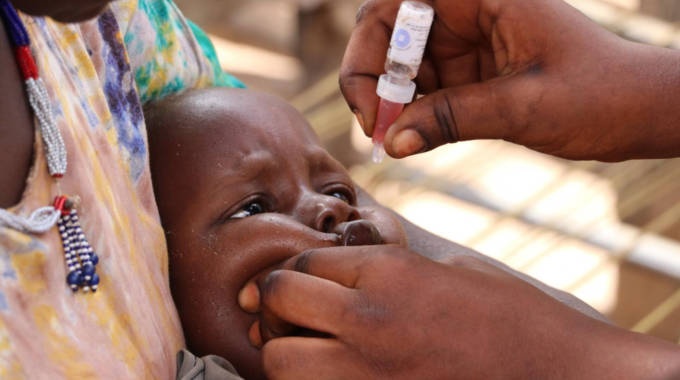
The ManicaPost

Poliomyelitis (polio) is a highly infectious viral disease that largely affects children under five years of age.
The virus is transmitted by person-to-person spread mainly through the faecal-oral route or, less frequently, by a common vehicle (for example contaminated water or food) and multiplies in the intestine, from where it can invade the nervous system and cause paralysis.
The disease can spread quickly, especially in areas with poor hygiene and sanitation systems.
In 1988, the World Health Assembly adopted a resolution for the worldwide eradication of polio, marking the launch of the Global Polio Eradication Initiative, spearheaded by national governments, WHO, Rotary International, the US Centers for Disease Control and Prevention (CDC), UNICEF, and later joined by the Bill & Melinda Gates Foundation and Gavi, the Vaccine Alliance.
Wild poliovirus cases have decreased by over 99 percent since 1988, from an estimated 350 000 cases in more than 125 endemic countries then to 175 reported cases in 2019.
Of the three strains of wild poliovirus (type 1, type 2 and type 3), wild poliovirus type 2 was eradicated in 1999 and no case of wild poliovirus type 3 has been found since the last reported case in Nigeria in November 2012.
Both strains have officially been certified as globally eradicated.
As at 2020, wild poliovirus type 1 affected two countries – Pakistan and Afghanistan.
A wild poliovirus type 1 outbreak was recently reported in neighbouring Mozambique.
The outbreak was first reported in Malawi.
Symptoms
Poliovirus is highly infectious.
The incubation period is usually seven to 10 days but can range from four to 35 days.
Up to 90 percent of those infected experience no or mild symptoms and the disease usually goes unrecognised.
In others, initial symptoms include fever, fatigue, headache, vomiting, stiffness in the neck, and pain in the limbs.
These symptoms usually last for two to 10 days and most recovery is complete in almost all cases.
However, in the remaining proportion of cases, the virus causes paralysis, usually of the legs, which is most often permanent.
Paralysis can occur as rapidly as within a few hours of infection. Of those paralysed, five to 10 percent die when their breathing muscles become immobilised.
Treatment
There is no cure for polio, it can only be prevented by immunisation.
The polio vaccine, given multiple times, can protect a child for life. More than 18 million people are able to walk today who would otherwise have been paralysed, since 1988, when the Global Polio Eradication Initiative was launched.
An estimated 1.5 million childhood deaths have been prevented through the systematic administration of vitamin A during polio immunisation activities.
Treatments for polio focus on limiting and alleviating symptoms.
Heat and physical therapy can be used to stimulate the muscles and antispasmodic drugs are used to relax the affected muscles.
This can improve mobility but does not reverse permanent polio paralysis.
Vaccination is crucial in the fight against polio.
Failure to implement strategic approaches leads to ongoing transmission of the virus.
Endemic transmission of wild poliovirus is continuing to cause cases in Afghanistan, Pakistan and now Mozambique.
Failure to stop polio in these last remaining areas could result in as many as 200 000 new cases every year within 10 years, all over the world.
That is why it is critical to ensure polio is eradicated completely, once and for all.
The strategies for polio eradication work when they are fully implemented. – WHO/Manica Post.



